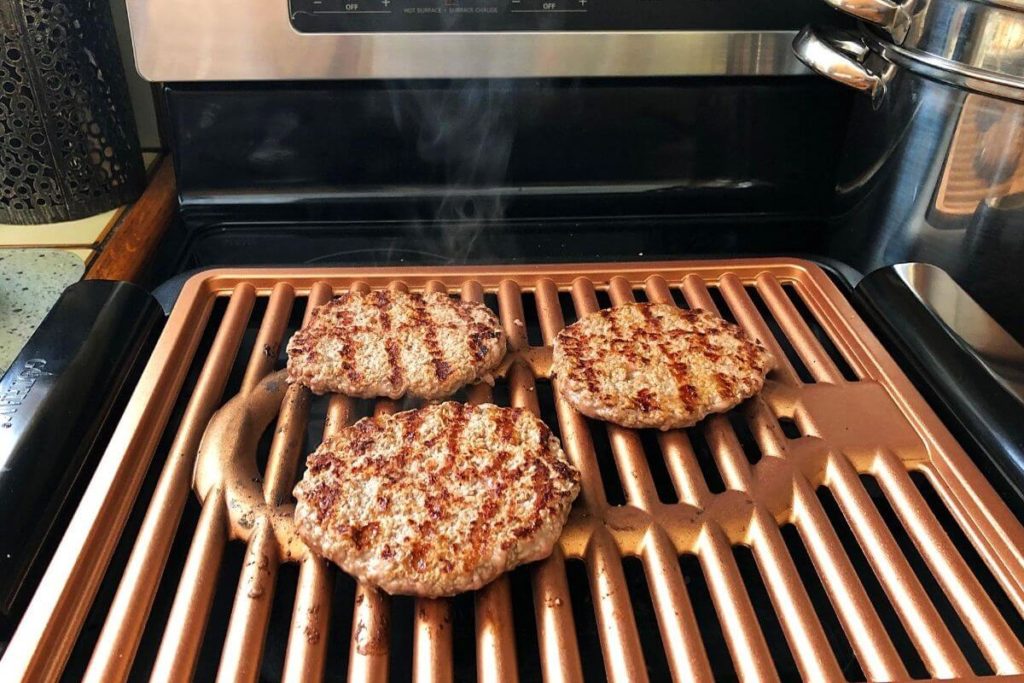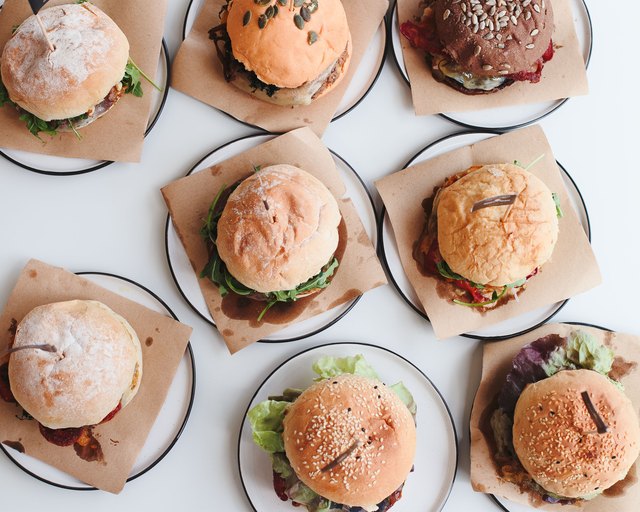Mastering the Art of Stovetop Burgers
I. Introduction
Burgers have become a popular choice for many people due to their delicious taste and the convenience of being able to cook them on the stovetop. In this article, we will discuss the various aspects of making the perfect stovetop burgers. We will cover everything from choosing the right meat and ingredients to preparing and shaping the burger patties.
II. Choosing the Right Meat and Ingredients
A. Selection of Ground Meat
When it comes to making stovetop burgers, one of the most important considerations is the type of ground meat you use. Opting for high-quality ground beef is essential for flavorful and juicy burgers. Look for ground beef with a good fat content, as this will help keep the burgers moist and prevent them from drying out during cooking.
For those looking for variety or wanting to explore alternative options, there are other meats that can be used as a base for your burgers. Ground turkey and ground chicken are both lean and healthy alternatives. They can provide a different flavor profile and are great options for those who prefer lighter meats. Additionally, there are also vegetarian ground meat substitutes available for those following a vegetarian or vegan diet.
B. Seasoning and Flavor Enhancements
While burgers can be delicious with just the basics, a little seasoning and flavor enhancements can take them to another level. Salt and pepper are essential for basic seasoning and should be added to taste. However, don’t be afraid to explore additional herbs, spices, and marinades to add more flavor to your burgers.
Herbs like rosemary, thyme, or oregano can provide a fragrant and earthy taste, while spices like paprika, cumin, or chili powder can add some heat and depth. Experiment with different combinations to find your favorite flavors. You can also marinate the ground meat before shaping the patties, allowing the flavors to penetrate throughout the burger.
III. Preparing and Shaping the Burger Patties
A. Proper Handling and Shaping
When it comes to shaping burger patties, it’s important to handle the ground meat gently. Over-mixing the meat can result in tough and dense burgers. Lightly mix the seasonings and other ingredients into the meat, being careful not to overdo it.
To create uniform-sized patties, use a kitchen scale to weigh out the desired amount of meat for each patty. This ensures that all the burgers cook evenly and finish at the same time. Shape the meat into round patties, flattening them slightly with your hands. Avoid pressing the meat too hard, as this can make the burgers dense and tough.
B. Creating Indentations and Uniform Thickness
To prevent the burgers from bulging in the center during cooking, create a slight indentation in the center of each patty with your thumb or the back of a spoon. This allows for even cooking and helps the burgers maintain their shape.
In addition to creating indentations, it’s important to ensure that the burger patties have a consistent thickness. This helps them cook evenly and avoids the risk of ending up with undercooked or overcooked sections. To achieve this, use your hands or a burger press to shape the patties into a uniform thickness.

IV. Cooking Techniques for Perfect Stovetop Burgers
A. Preheating the Pan
When it comes to cooking the perfect stovetop burgers, one of the first steps you should take is preheating the pan. Choosing the right pan is crucial for achieving the desired results. Cast iron and stainless steel pans are popular choices due to their ability to retain and distribute heat evenly.
Before preheating the pan, make sure to clean it thoroughly and remove any debris or residue. Once the pan is clean, place it on the stovetop over medium-high heat. Allow the pan to heat up for a few minutes until it becomes hot.
Adding a small amount of oil or butter to the preheated pan not only adds flavor to the burgers but also helps prevent them from sticking. Use a heat-resistant oil like canola or vegetable oil, or opt for butter for some extra richness. Add enough oil or butter to create a thin layer on the pan’s surface, allowing it to coat the burgers evenly.
B. Flip Once and Avoid Overcooking

To achieve a juicy and flavorful result, it’s important to know when to flip the burgers and avoid overcooking them. Start by cooking the burgers on one side until a crust forms. This creates a flavorful sear and helps lock in the juices.
Resist the temptation to constantly flip the burgers. Flipping them only once is essential to maintain their juiciness. Constant flipping can cause the burgers to dry out, resulting in a less enjoyable dining experience.
To ensure the burgers are cooked to your desired doneness, use a meat thermometer to monitor the internal temperature. The USDA recommends cooking ground beef to a minimum internal temperature of 160°F (71°C) to ensure food safety. However, personal preferences for burger doneness may vary. For a medium-rare burger, aim for an internal temperature of around 145°F (63°C), while a well-done burger should reach an internal temperature of 160°F (71°C) or higher.
C. Resting the Burgers
After cooking the burgers, it’s crucial to allow them to rest for a few minutes before serving. Resting the burgers helps retain moisture and enhances tenderness. During the cooking process, the heat causes the proteins in the meat to contract and push the juices towards the center. Allowing the burgers to rest allows the proteins to relax, leading to more evenly distributed juices throughout the patty.
When resting the burgers, remove them from the heat source and place them on a plate or cutting board. Tent the burgers loosely with foil to help retain the heat. Let them rest for about 5 minutes to allow the juices to redistribute. This extra step will make a noticeable difference in the taste and texture of your burgers.
V. Serving Suggestions and Burger Accompaniments
A. Choosing the Right Bun
The bun choice can greatly enhance the overall burger experience. Some popular options include brioche, whole grain, or even a lettuce wrap for a low-carb alternative. Consider the texture and flavor you desire. For a soft and slightly sweet bun, brioche is an excellent choice. Whole grain buns add a nutty flavor and provide a healthier option. Lettuce wraps are a great gluten-free alternative and provide a refreshing crunch.
B. Cheese, Toppings, and Condiments
Choosing the right cheese for your burger is an exciting way to add flavor and richness. Options like cheddar, blue cheese, Swiss, or even pepper jack can complement the burger flavors beautifully. Experiment with different cheese options to find your favorite combination.
When it comes to toppings, the possibilities are endless. Lettuce, tomato, onion, and pickles are classic choices that add freshness and crunch to your burger. Consider experimenting with other toppings like caramelized onions, sautéed mushrooms, avocado, or even fried eggs for a unique twist.
Finally, don’t forget about the condiments. Ketchup, mustard, and mayo are standard choices, but don’t shy away from trying homemade sauces or specialty condiments like barbecue sauce, aioli, or chipotle mayo. These flavorful additions can take your burger to the next level.
In conclusion, cooking the perfect stovetop burger involves preheating the pan, flipping the burger once to retain juiciness, monitoring internal temperature for desired doneness, and allowing the burgers to rest before serving. Additionally, choosing the right bun, cheese, toppings, and condiments can greatly enhance the overall burger experience. Experiment with these techniques and suggestions to create mouthwatering, restaurant-quality burgers in your own home.
